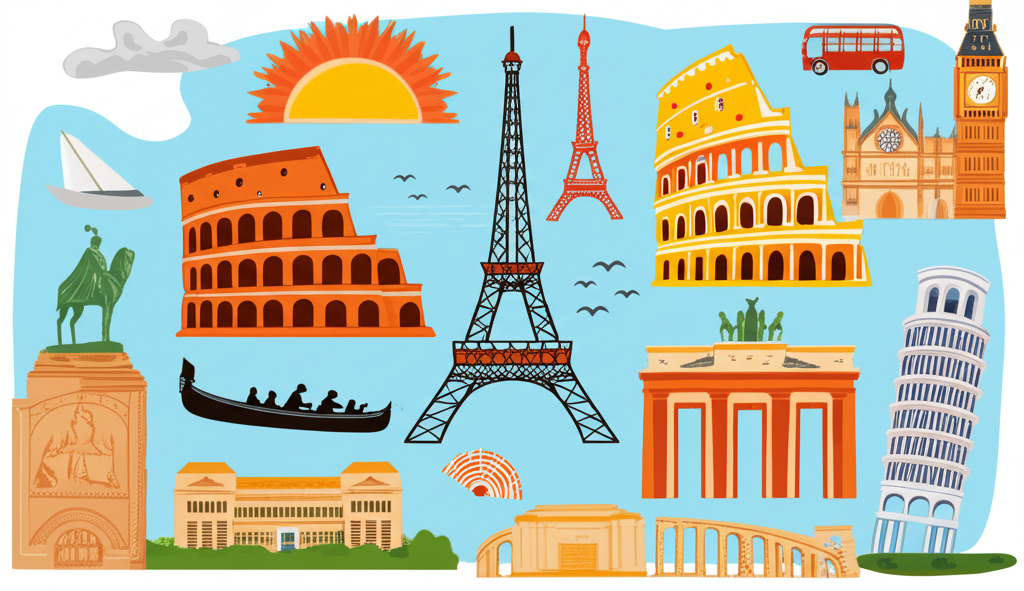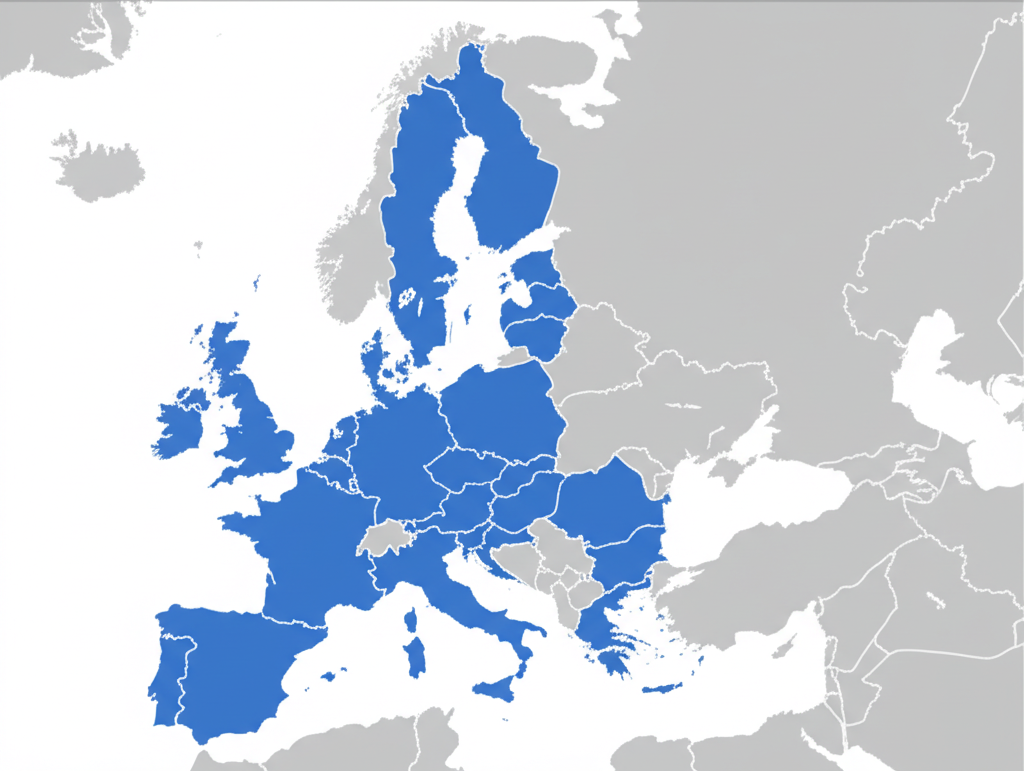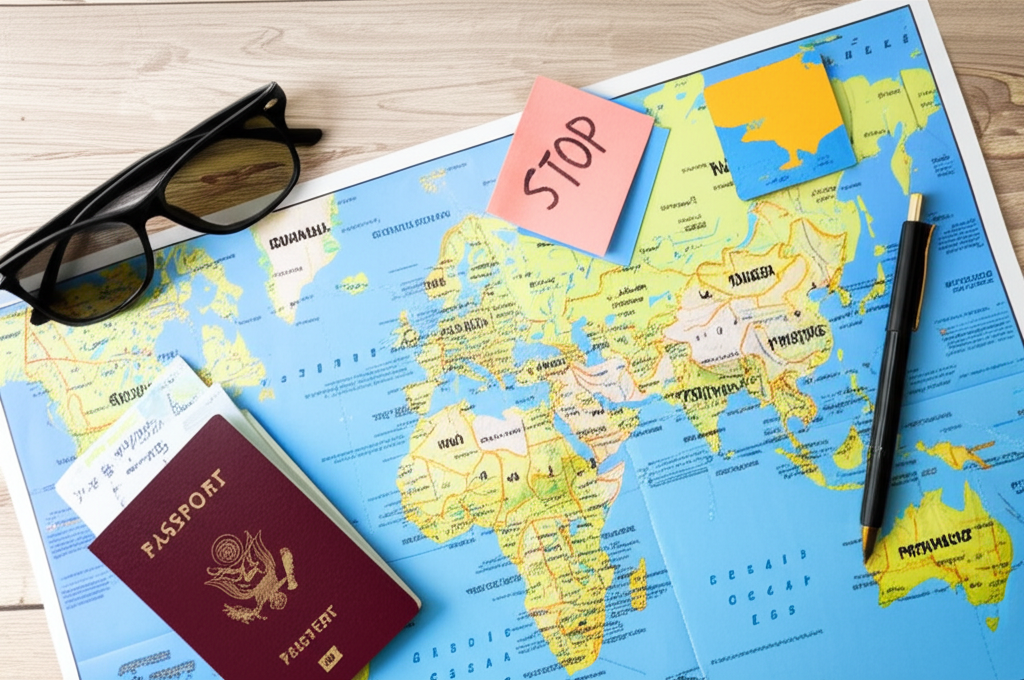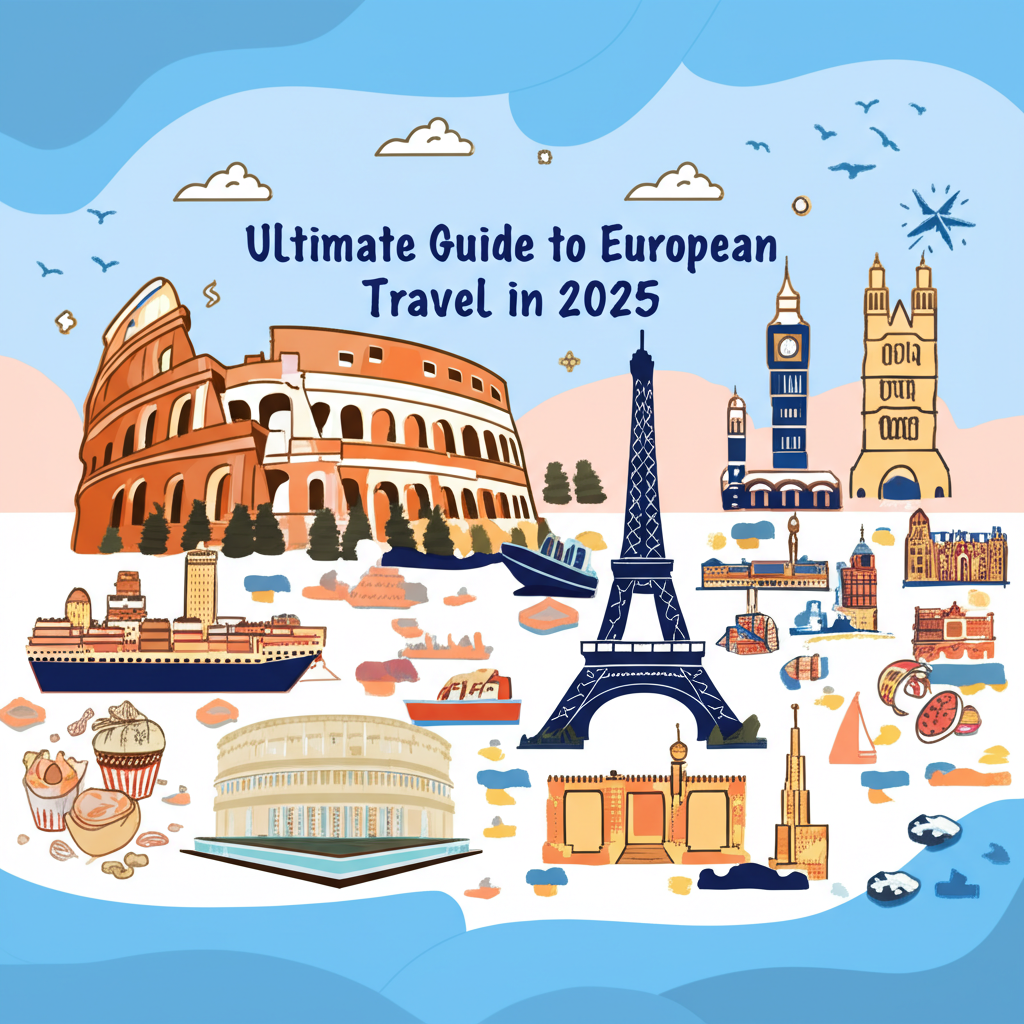Ultimate Europe Travel Guide for Visa Holders in 2025

Ultimate Europe Travel Guide for Visa Holders in 2025

Iconic landmarks across Europe that await travelers with Schengen visas
Introduction: Making the Most of Your European Adventure
Congratulations on obtaining your Schengen visa! With access to 26 European countries, you're about to embark on an unforgettable journey through a continent rich in history, culture, and natural beauty. This comprehensive guide will help you navigate Europe efficiently, maximize your travel experience, and avoid common pitfalls that first-time visitors encounter.
Whether you're planning a whirlwind tour of major capitals, a leisurely exploration of countryside villages, or a combination of both, this guide provides practical advice on transportation, accommodation, budgeting, cultural etiquette, and must-visit destinations across the Schengen Area.

The Schengen Area encompasses 26 European countries that have officially abolished border controls
Pre-Trip Planning: Essential Preparations
Thorough planning is the foundation of a successful European adventure. Here are key considerations before departure:
Documentation & Legal Requirements
- Passport & Visa: Ensure your passport is valid for at least 3 months beyond your planned departure date from the Schengen Area
- Travel Insurance: Comprehensive travel insurance with minimum €30,000 coverage is mandatory
- Entry/Exit Stamps: Always verify you receive proper entry stamps, as missing stamps can cause issues later
- Digital Copies: Store digital copies of all important documents in cloud storage
- Embassy Contacts: Save contact information for your country's embassies in each destination
Practical Preparations
- Currency: Obtain some euros/local currency before departure; inform your bank of travel plans
- Mobile Access: Check if your phone plan offers European coverage or consider a local SIM card
- Power Adapters: Europe uses 230V and Type C/F plugs; bring appropriate adapters
- Language Basics: Learn essential phrases in local languages of your destinations
- Weather Research: Pack according to seasonal conditions in each location
Important 2025 Update: The European Travel Information and Authorization System (ETIAS) is now operational. While this doesn't affect Schengen visa holders, be aware that your travel companions from visa-exempt countries may need to register with ETIAS before travel.
Getting Around Europe: Transportation Options
Europe offers excellent transportation infrastructure, making it easy to travel between and within countries:

Planning your route across Europe is essential for maximizing your Schengen visa's 90-day limit
Trains
Europe's extensive rail network is often the most comfortable and scenic way to travel.
- Eurail Pass: Consider if visiting multiple countries
- High-Speed Options: TGV (France), ICE (Germany), AVE (Spain)
- Booking Window: Reserve 2-3 months ahead for best prices
- Night Trains: Save on accommodation while traveling
- Regional Trains: Often cheaper but slower than high-speed options
Budget Airlines
Perfect for covering long distances quickly and often economically.
- Major Carriers: Ryanair, EasyJet, Wizz Air, Vueling
- Hidden Costs: Watch for baggage fees and airport location
- Booking Strategy: Tuesday/Wednesday flights often cheapest
- Airport Transfers: Budget for transportation to/from airports
- Weight Limits: Strictly enforced; measure and weigh bags
Local Transportation
Efficient public transit makes exploring cities easy and affordable.
- City Cards: Often include unlimited transit and attractions
- Metro Systems: Available in most major cities
- Bike Rentals: Popular in Amsterdam, Copenhagen, Barcelona
- Ridesharing: Uber available in many (but not all) cities
- Walking: Often the best way to experience European cities
Pro Tip: For multi-country itineraries, consider an "open-jaw" flight strategy—flying into one city and departing from another—to avoid backtracking and maximize your time.
Where to Stay: Accommodation Options for Every Budget
Europe offers lodging options for every preference and budget:
| Accommodation Type | Price Range | Best For | Tips |
|---|---|---|---|
| Hostels | €15-40/night | Solo travelers, social atmosphere | Book private rooms for more comfort; check for age restrictions |
| Budget Hotels | €50-100/night | Couples, privacy seekers | Look for family-run hotels for local character and advice |
| Vacation Rentals | €70-200+/night | Families, longer stays | Book well in advance, especially during high season |
| Boutique Hotels | €120-300+/night | Special occasions, unique experiences | Look for deals in shoulder seasons (Apr-May, Sep-Oct) |
| Alternative Options | Varies | Budget travelers, authentic experiences | Consider house-sitting, monasteries, university dorms (summer) |
When booking accommodation, consider these factors:
Location Considerations
- City Center vs. Outskirts: Central locations save time but cost more; evaluate public transportation options if staying further out
- Neighborhood Character: Research the vibe and safety of different areas
- Proximity to Attractions: Calculate time and transportation costs when comparing options
- Noise Levels: Central areas may be louder, especially in southern European cities with late-night culture
Booking Strategies
- Advance Booking: Essential for high season (June-August) and major events
- Cancellation Policies: Opt for free cancellation when possible for flexibility
- Reviews: Read recent reviews focusing on location, cleanliness, and Wi-Fi quality
- Direct Booking: Sometimes offers better rates or perks than third-party sites
Managing Your Money: Budgeting for European Travel
Europe spans a wide range of price points, from budget-friendly Eastern European destinations to expensive Nordic countries. Here's how to plan your finances:
Budget Travel
€50-70/day
- Hostels or budget accommodations
- Self-catering or street food
- Public transportation or walking
- Free attractions and activities
- Best value: Portugal, Eastern Europe, Balkans
Mid-Range Travel
€100-150/day
- 3-star hotels or private rooms
- Mix of dining out and self-catering
- Some paid attractions and activities
- Occasional taxis or rideshares
- Manageable in: Spain, Italy, Germany
Luxury Travel
€200+/day
- 4-5 star hotels or premium rentals
- Fine dining and experiences
- Private tours and premium activities
- Car rentals or first-class train travel
- Expect in: Switzerland, Norway, France
Money-Saving Tips: Consider city tourist cards for major destinations, which often include public transportation and free/discounted entry to attractions. Eat your main meal at lunch when many restaurants offer prix-fixe menus at lower prices than dinner.
Payment Methods & Currency
Cash vs. Cards
- Cash: Still important in Southern and Eastern Europe, small towns, and markets
- Cards: Widely accepted in Northern and Western Europe; contactless payment common
- ATMs: Withdraw local currency as needed; avoid currency exchange bureaus
- Card Fees: Use cards with no foreign transaction fees; always pay in local currency when given the option
Currency Considerations
- Euro Countries: Most Schengen countries use the euro, but not all
- Non-Euro Schengen: Denmark (Danish krone), Sweden (Swedish krona), Poland (złoty), Czech Republic (koruna), Hungary (forint), etc.
- Exchange Rates: Monitor using apps like XE or Wise
- Tipping: Varies by country; generally less expected than in North America
Sample Itineraries: Making the Most of Your Schengen Visa
With 90 days to explore the Schengen Area, strategic planning is essential. Here are sample itineraries to inspire your planning:

The diverse landscapes of Europe offer everything from alpine mountains to Mediterranean beaches
Classic Western Europe (14-21 Days)
- Days 1-4: Paris, France (Eiffel Tower, Louvre, Notre Dame)
- Days 5-7: Amsterdam, Netherlands (Canals, Van Gogh Museum)
- Days 8-10: Berlin, Germany (Brandenburg Gate, Museum Island)
- Days 11-14: Prague, Czech Republic (Old Town, Prague Castle)
- Days 15-17: Vienna, Austria (Schönbrunn Palace, Opera)
- Days 18-21: Munich, Germany (Marienplatz, day trip to Neuschwanstein)
Transportation: High-speed trains, regional trains for shorter distances
Mediterranean Exploration (14-21 Days)
- Days 1-4: Barcelona, Spain (Sagrada Familia, Park Güell)
- Days 5-7: French Riviera, France (Nice, Monaco day trip)
- Days 8-11: Florence, Italy (Uffizi, Duomo)
- Days 12-14: Rome, Italy (Colosseum, Vatican)
- Days 15-17: Amalfi Coast, Italy (Positano, Capri day trip)
- Days 18-21: Athens, Greece (Acropolis, Plaka district)
Transportation: Mix of flights for longer distances, trains, and ferries
Northern European Adventure (14-21 Days)
- Days 1-3: Copenhagen, Denmark (Nyhavn, Tivoli Gardens)
- Days 4-6: Stockholm, Sweden (Gamla Stan, Vasa Museum)
- Days 7-9: Helsinki, Finland (Senate Square, Suomenlinna)
- Days 10-12: Tallinn, Estonia (Medieval Old Town)
- Days 13-15: Riga, Latvia (Art Nouveau district)
- Days 16-18: Vilnius, Lithuania (Baroque Old Town)
- Days 19-21: Warsaw, Poland (Old Town, Royal Castle)
Transportation: Flights between Nordic capitals, buses or trains in Baltics
Eastern European Discovery (14-21 Days)
- Days 1-3: Budapest, Hungary (Parliament, Thermal Baths)
- Days 4-6: Vienna, Austria (Hofburg Palace, Belvedere)
- Days 7-9: Bratislava, Slovakia (Castle, Old Town)
- Days 10-13: Krakow, Poland (Wawel Castle, Auschwitz day trip)
- Days 14-16: Prague, Czech Republic (Charles Bridge, Old Town)
- Days 17-19: Dresden, Germany (Zwinger Palace, Frauenkirche)
- Days 20-21: Berlin, Germany (East Side Gallery, Museum Island)
Transportation: Efficient train network, some buses for shorter routes
Schengen Visa Reminder: Remember that your 90-day limit applies to the entire Schengen Area, not individual countries. Use the official Schengen calculator to track your days.
Cultural Etiquette: Navigating European Customs
Understanding local customs will enhance your experience and help you avoid unintentional faux pas:
Dining Etiquette
- Keep hands visible on the table, not in your lap
- In Southern Europe, dinner starts late (8-10pm)
- Tipping varies: 5-10% in most countries, included in bill in others
- Ask for the check; servers won't bring it automatically
- Water and bread may not be free; specify tap water if desired
Social Customs
- Greetings: Handshakes common; cheek kisses in Southern Europe
- Volume: Keep conversations quieter in Northern Europe
- Personal space: Varies by region (larger in North, closer in South)
- Punctuality: Crucial in Germany/Switzerland; more relaxed in South
- Photography: Ask permission before photographing locals
Shopping & Business
- Greeting shop staff upon entering is customary
- Haggling is uncommon except in markets in Southern Europe
- Many shops close on Sundays and for lunch in smaller towns
- VAT refunds available for purchases over certain amounts
- Business meetings require formal attire in most countries
Staying Safe: Security Tips for Travelers
While Europe is generally safe for travelers, it's important to stay vigilant, especially in tourist areas:
Common Safety Concerns
- Pickpocketing: Prevalent in crowded tourist areas, transportation hubs
- Tourist Scams: Be wary of "friendship bracelet" offers, fake petitions, distraction techniques
- ATM Skimming: Use ATMs inside banks when possible
- Transportation Safety: Use licensed taxis or official rideshare apps
- Belongings: Never leave bags unattended, even momentarily
Safety Precautions
- Money Management: Carry limited cash, use money belts in high-risk areas
- Copies of Documents: Keep digital and physical copies separate from originals
- Emergency Numbers: 112 works throughout Europe for emergencies
- Travel Registration: Register with your country's embassy travel program
- Travel Insurance: Ensure coverage for theft, medical emergencies, and trip disruptions
Conclusion: Your European Adventure Awaits
With your Schengen visa in hand and this guide as your companion, you're well-equipped to embark on an unforgettable European journey. From the sun-drenched Mediterranean coasts to the historic capitals of Central Europe and the pristine landscapes of Scandinavia, the continent offers endless possibilities for exploration and discovery.
Remember that flexibility is key to enjoying your travels. While planning is essential, leave room for spontaneous experiences and unexpected discoveries that often become the most cherished memories of your trip.

Create memories that will last a lifetime as you explore the diverse cultures and landscapes of Europe
Final Travel Checklist
- Double-check visa validity dates and passport expiration
- Confirm all reservations and save confirmation codes offline
- Download offline maps and translation apps
- Inform your bank of travel dates and destinations
- Pack adaptively for various climates and cultural expectations
- Purchase comprehensive travel insurance
- Make copies of important documents (physical and digital)
- Research local customs and basic phrases for each destination
As you prepare for your European adventure, remember that our document generation tools can help you create professional travel documents that may be required during your journey. From hotel reservations to travel insurance certificates, we're here to support your travel needs.
Need Help With Your Travel Documents?
Our document generation tools can help you create professional documents for your European adventure.
Generate Hotel Reservations Create Travel ItinerariesLast updated: February 20, 2025 | This guide reflects the most current European travel information and regulations.
Need Help With Your Visa Documents?
Our document generation tools can help you create professional visa application documents quickly and accurately.